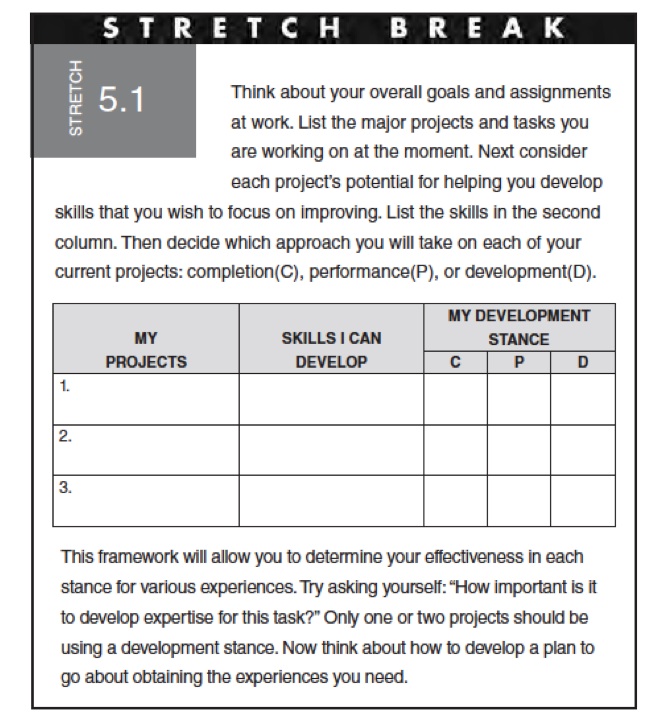
“I don’t divide the world into the weak and the strong, or the successes and the failures, those who make it or those who don’t. I divide the world into learners and non-learners.”
—Benjamin Barber
Here’s a personal question for you: Are you a good breather? “Well, of course,” you might think. Yet all you have to do is take a yoga class to discover there are many more ways to breathe. Box breathing for stress relief, ocean breathing for deep relaxation, cleansing breathing, and the list goes on. If that’s not enough, you can buy tools to support improving the muscles surrounding your lungs.
In a similar way, we almost all think of ourselves as quick learners. But how do we know that we, or any of the people in our organization, are actually good learners on the job? Part of the challenge with learning at work is that we already feel overwhelmed with what we have to achieve. The average salaried worker puts in 49 hours a week at the job and can still feel behind. In spite of all the focus on informal learning in the Training industry, we can find little evidence of organizations helping people become better informal learners, or what we call learning on the fly.
On the formal learning side, places such as the University of Texas have introduced successful development programs to help low-income students increase their graduation rates by teaching them skills on learning how to learn. If most learning happens on the job, as professionals in the Training industry, we owe increasing the success of people on the job by helping them learn better on the fly. We think it’s time to train people on being better learners.
The premise of our new book, “Stretch: How to Future-Proof Yourself for Tomorrow’s Workplace,” is that everyone can extend their sell-by date by using the practices and strategies we lay out in the book. Here’s a short excerpt from “Stretch” of just one strategy people can use in their everyday work to learn more:
According to researchers at Harvard, we can approach our work from one of three stances: completion, performance, or development. The stance we take will affect how much we learn in any given situation.
In the completion stance, our primary goal is to get the task or job done. We need simply to get it off our to-do list and not look for any additional challenge. If any learning happens, it is somewhat accidental.
The stakes in a performance stance are little higher. Here you care more about high-quality results and may push yourself with new challenges. Surmounting these challenges leads to learning, even though it may not have been a conscious goal.
In a development stance, you care about getting the task done really well and using what you learn to do even better work in the future.
As an example, let’s assume you have been put in charge of chairing a meeting. In a completion stance, you would use the standing agenda or formats by which meetings are routinely run in your organization, or maybe even less. You just want to get the meeting off your to-do list.
In a performance stance, you might consider how to make the meeting more efficient and meaningful for everyone in the room and consider some ways to run the meeting differently than others have done. Because you have applied some thought to how to conduct the meeting better, you will have a better opportunity to learn something new.
In the third stance—development—you might do a little research to find ways to have effective meetings, talk to people who are known for running great meetings, and be more attentive at other meetings about the processes people are using that work or do not work for effective meetings. Maybe you would take an online course or sign up for a MOOC (massive open online course) on how to run effective meetings. With or without the formal training, taking this stance will allow you to learn more from the experience.
If you are new to a content area or task and have decided to take a development stance, having some guidance can accelerate your performance. In a study of software engineers, a simple 15-minute discussion with a more experienced developer about the task helped improve performance significantly. Can you seek out people who can help guide you, especially if you promise to use only 15 minutes of their time?
Of course it isn’t possible to approach all our work with a development stance. On the other hand, if you are approaching all your work with a completion stance, you are unlikely to be learning on the fly and gaining real value from the experience. Your risk of slowly losing ground in your field increases. The key is to find a balance. Try selecting a few work assignments in which you think you have an opportunity to learn some skill or capability that will ensure you keep growing. Apply the development stance on strategic areas, and watch as you amass knowledge and skills that pay off in the future.

Excerpt from “Stretch: How to Future-Proof Yourself for Tomorrow’s Workplace,” by Karie Willyerd and Barbara Mistick. The book was a January 2016 Amazon Editor’s Pick. For more information, visit http://stretchthebook.com/
Karie Willyerd is a workplace futurist for SAP SuccessFactors, the coauthor of “The 2020 Workplace,” and former chief learning officer of Sun Microsystems.
Barbara Mistick is the president of Wilson College and former distinguished service professor at Carnegie Mellon University.



